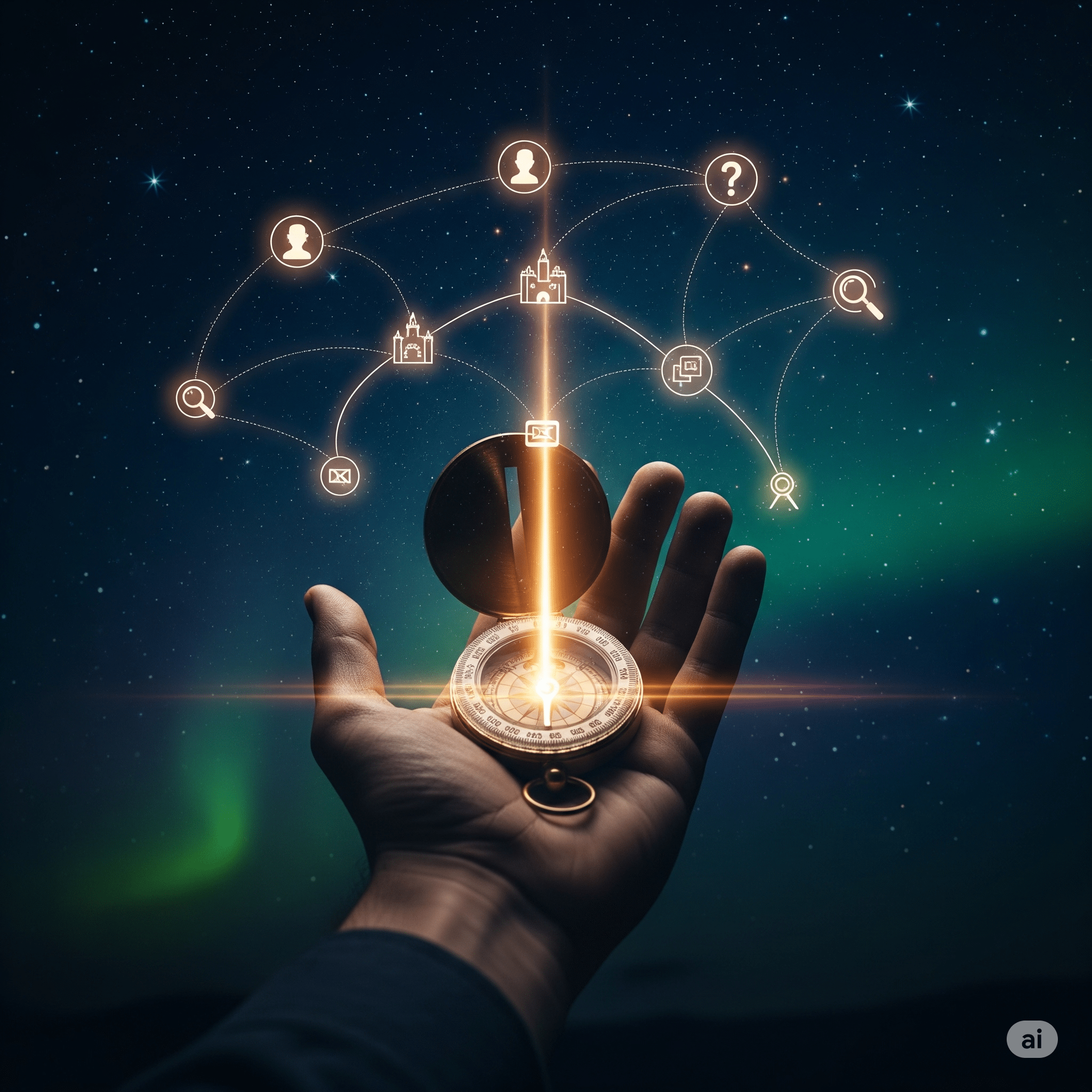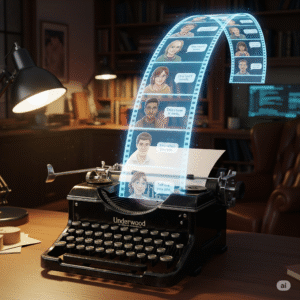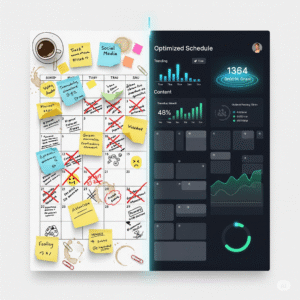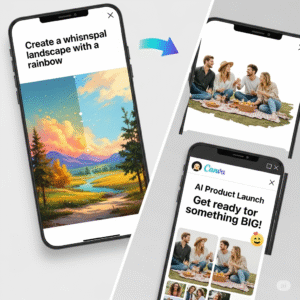Every creator is haunted by the ghosts of unfinished stories. They linger in forgotten documents, on dusty notebooks, and in the quiet moments of the day—the brilliant premise without a second act, the compelling character with nowhere to go, the perfect ending without a path to get there. The journey from a spark of an idea to a fully realized narrative is a formidable one, often fought alone against the vast, intimidating expanse of the blank page.
But what if you had a co-pilot for that journey? A tireless navigator who could chart a thousand possible courses, reveal hidden pathways, and help you find the most compelling destination for your story? This isn’t a fantasy; it’s the new reality of creative collaboration powered by AI storytelling. The rise of sophisticated artificial intelligence has unlocked a new frontier for writers, screenwriters, game developers, and marketers, transforming the solitary act of creation into a dynamic partnership.
This guide will illuminate the world of AI storytelling and plot generation AI. We’ll explore how these tools can serve as a powerful muse to augment—not replace—your creative instincts. Forget the fear of robotic, soulless narratives. It’s time to discover how you can harness AI to build richer worlds, craft more intricate plots, and bring your most ambitious stories to life.
Beyond the Blank Page: What is AI Storytelling, Really?
Let’s first dispel a common myth. AI storytelling is not about pushing a button and having a machine write a novel for you. An AI has no lived experience, no emotional depth, and no genuine intent. It cannot understand the subtle heartbreak in a character’s dialogue or the profound symbolism of a recurring image. The human soul of the story will always belong to the human storyteller.
Instead, think of AI as a computational creativity engine. It has been trained on a massive dataset of literature, scripts, and texts, allowing it to recognize and replicate narrative patterns, structures, and styles with incredible speed. It’s a master of the “what if.” It can generate endless possibilities based on the prompts and parameters you provide, acting as a powerful tool to break through creative blocks and expand your own imaginative horizons.
The Human-AI Partnership in Modern AI Storytelling
The most effective use of AI storytelling is as a collaborative partnership. You, the human creator, bring the vision, the emotional core, the unique voice, and the ultimate “why” of the story. The AI brings boundless computational power, providing the “what ifs,” the alternative scenarios, and the raw material of possibility. This synergy allows you to explore narrative avenues you might never have considered, saving you from getting stuck in a single, linear path and helping you discover the most resonant version of your story.
The Engine Room: Unlocking Creativity with Plot Generation AI
One of the most powerful applications within the realm of AI storytelling is plot generation AI. This is where the AI truly becomes your narrative co-conspirator. A compelling plot is more than a sequence of events; it’s an intricate web of cause and effect, character motivations, rising stakes, and satisfying resolutions. Holding all these threads at once can be overwhelming for any writer.
A plot generation AI can assist in several key ways:
- Scaffolding with Narrative Structures: You can prompt the AI to outline a story using classic structures like The Hero’s Journey, Save the Cat!, or a three-act structure. It provides a solid skeleton that you can then flesh out with your unique characters and events.
- Generating “What If” Scenarios: This is the AI’s superpower. Give it a scenario: “My hero is trapped in a locked room.” The AI can instantly generate ten different ways she could escape, five unexpected people who could be on the other side of the door, and three shocking secrets she might find inside.
- Creating Subplots and Character Arcs: A rich story is layered. You can ask the AI to propose a subplot for a secondary character that thematically mirrors the main plot or to outline a believable character arc where a coward becomes a hero.
- Uncovering Unexpected Connections: By analyzing your existing plot points, an AI can sometimes identify and suggest surprising connections or thematic links that you might have missed, adding depth and coherence to your narrative.
Case Studies: AI Storytelling in the Creative Industries
The practical application of AI storytelling is already making waves across creative fields, allowing creators to work smarter and faster.
Case Study 1: “Lost Star Games,” an Indie Game Development Studio
The Challenge: The small team at Lost Star Games was building an ambitious open-world role-playing game. Their main quest was solid, but they lacked the resources to write hundreds of unique, engaging side quests to make their world feel alive. The task was threatening to delay their launch by months.
The Solution: The lead narrative designer used a plot generation AI to accelerate the process. He created a template for a “side quest” with inputs like [NPC Name], [Location], [Problem], and [Reward]. He then used the AI to generate hundreds of variations, such as “Farmer Giles in the Sunken Valley has a problem with giant spiders, and the reward is a magical sword.”
The Result: The AI generated a massive pool of core ideas in a single afternoon. The design team then curated the best ones, using their human creativity to add unique dialogue, moral choices, and twists. They estimate that this use of AI storytelling cut their side-quest development time by 70%, allowing them to populate their world with rich content without blowing their budget or timeline.
Case Study 2: Chloe, a Screenwriter on a Deadline
The Challenge: Chloe was working on a thriller script for a major studio, but she was stuck. She had written herself into a corner, and the third act felt predictable and unsatisfying. With a deadline looming, the pressure was immense.
The AI Solution: Feeling blocked, Chloe turned to ChatGPT as a brainstorming partner. She fed it a summary of her first two acts and then prompted it: “Given these events, propose five shocking but logical resolutions for the story. For each one, explain the main character’s final choice.”
The Result: The AI produced a range of possibilities, from tragic endings to triumphant ones. One suggestion—that the supposed villain was actually protecting the protagonist from an even greater threat—was a twist Chloe hadn’t considered. It didn’t provide the final script, but it shattered her creative block. Inspired by this new angle, she was able to rethink and rewrite a more complex and surprising third act, meeting her deadline with a script she was proud of. This is a perfect example of using AI storytelling to augment professional creativity.
A Practical Workflow for AI Storytelling
Harnessing the power of plot generation AI is a skill. Here’s a beginner-friendly workflow to get the most out of your new creative partner.
- Start with a Seed of an Idea (Your “Why”): Never start with a blank prompt. Begin with a core concept, a character you love, or a theme you want to explore. The AI works best when it has a creative seed to grow.
- Use AI to Explore the “What Ifs”: This is the brainstorming phase. Use open-ended prompts. Ask for lists of ideas, alternative settings, character flaws, or potential conflicts. Your goal is to generate a wide range of possibilities.
- Structure Your Outline with AI Assistance: Once you have your core ideas, ask the AI to help you structure them. “Organize these plot points into a three-act structure” or “Create a chapter outline based on this summary.”
- Flesh Out Characters and Worlds: Dive deeper. Use the AI to conduct “interviews” with your characters. Ask it to describe a city in your world, its customs, or its history. Use this generated material as a reference and inspiration.
- You Are the Author, AI is the Assistant: This is the most important step. The AI’s output is raw material. Your job is to select the best ideas, rewrite them in your unique voice, add emotional depth, and weave them into a coherent and compelling narrative. The final work must be yours. As the Writers Guild of America’s principles on AI state, AI can be a tool, but the credited author must always be human.
- Beat Writer’s Block Forever: The Ultimate Guide to AI Creative Writing
The Storyteller’s AI Toolkit: From Plot Generation to Analysis
A new generation of powerful author AI tools is at your fingertips. Here are a few standouts:
- ChatGPT: The ultimate creative Swiss Army knife. Its conversational interface makes it perfect for brainstorming plots, developing characters, writing summaries, and experimenting with different writing styles.
- Sudowrite: This platform is purpose-built for fiction writers. It includes specific features like “Brainstorm” for generating ideas, “Twist” for finding plot turns, and “Describe” for enriching your prose with sensory details.
- MonkeyLearn: While not a generator, this tool shows the analytical power of AI. You could use it to analyze audience reviews of similar books or movies to understand what plot points and character types resonate most, informing your own AI storytelling process with data.
Conclusion: The Next Chapter of Creativity is Collaborative
AI storytelling is not an existential threat to creativity; it is its next great evolution. It provides writers and creators with an unprecedented ability to explore, experiment, and build narrative worlds of incredible depth and complexity. By handling the heavy lifting of ideation and structural outlining, these tools free up the human creator to focus on what truly matters: character, emotion, voice, and the soul of the story.
The era of the lonely writer staring at a blank page is ending. The future of creativity is collaborative, a dynamic dance between the human heart and the computational mind. Embrace the tools, master the partnership, and unlock the infinite stories waiting to be told.
Your Firewall Is Obsolete: The AI Cybersecurity Revolution Is Here



